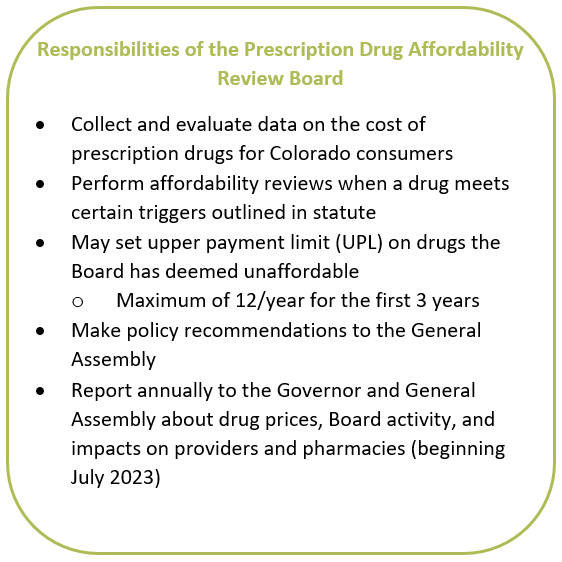As administrator of the Colorado All Payer Claims Database (CO APCD), one of the CIVHC’s key responsibilities is continually working to improve the completeness, quality, and utility of the database. One of the most essential activities in continuing enhance the CO APCD is annual updates of the Data Submission Guide (DSG).
The DSG acts as a guide for payers to understand what data elements must be submitted and in what format. Each year, it is updated to add new data elements that will enhance or add new reporting from the CO APCD or clarify submission guidelines.
Updates to the DSG also include updates to submission manuals around non-claims data collected in the CO APCD, including data on Alternative Payment Models and prescription drug rebate costs.
CIVHC began collecting information on prescription drug rebates from payers in 2018 and produces an annual public report on prescription drug payments and rebates. However, new data files were introduced to the DSG in 2022 expanding the collection of information around prescription drug spending and rebates in support of state legislation aimed at addressing costs that continue to rise.
Creating a Prescription Drug Affordability Board
In 2021, the Colorado State Senate approved SB21-75, which established a Prescription Drug

Affordability Review Board (PDAB) housed within the Colorado Division of Insurance. The bill gives the Board the responsibility of reviewing the affordability of high cost drugs and possibly setting payment limits for drugs determined to be unaffordable.
The bill names the CO APCD as a primary source of information, as requested by the payers and pharmacy benefit managers.
All payers were mandated to begin reporting the information required by the bill in September of 2022, and CIVHC provided the data to the DOI in February 2023.
New Pharmacy Data Captured in the CO APCD
While the CO APCD already contained a good deal of information required under SB21-75, the legislation introduced several pieces of information that needed to be added. DSG 13, which went into effect in 2022, introduced collection of a new annual files from payers in order to meet the established reporting requirements.
The table below shows the nine data elements legislated to be collected and reported on from the CO APCD under the banner of the PDAB. While most of the data elements (dark grey) were already feasible for CIVHC to report on based on current data being collected in the CO APCD, several (in green) could not be derived from current CO APCD data. These new data elements were included in the DSG as a separate annual file submission that payers report to CIVHC outside of their monthly submissions.

As CIVHC collected and verified the first PDAB annual data files in the fall of 2022, the intake team worked closely with payers to familiarize them with the new processes and identify parts of the legislated reporting that need further definition. CIVHC incorporated suggestions from payers on what submitted data fields needed clarification or correction into DSG 14, which went into effect in 2023.
CIVHC is still in the process of collaborating with payers to verify the quality of submitted files and ensure timely, accurate reporting, and will continue to introduce additional corrections and refinements to collected data elements in future annual DSG changes.
Like other non-claims data collected by CIVHC, the PDAB reporting will continue to be collected on an annual basis. Per the rule change requirement for this new information, the data will only be reported directly to DOI and will not be available in non-public reports provided by CIVHC.
If you have questions or want more information on prescription drug data collected in the CO APCD, you can reach us at info@civhc.org.

